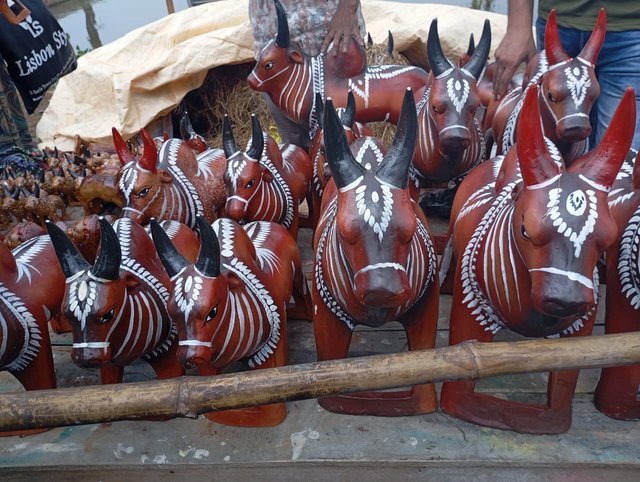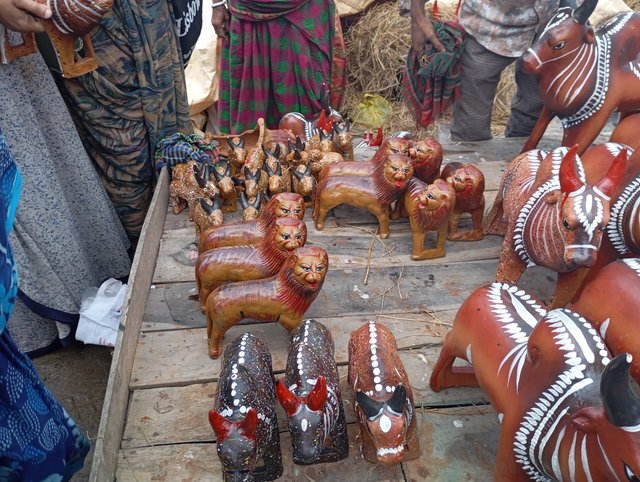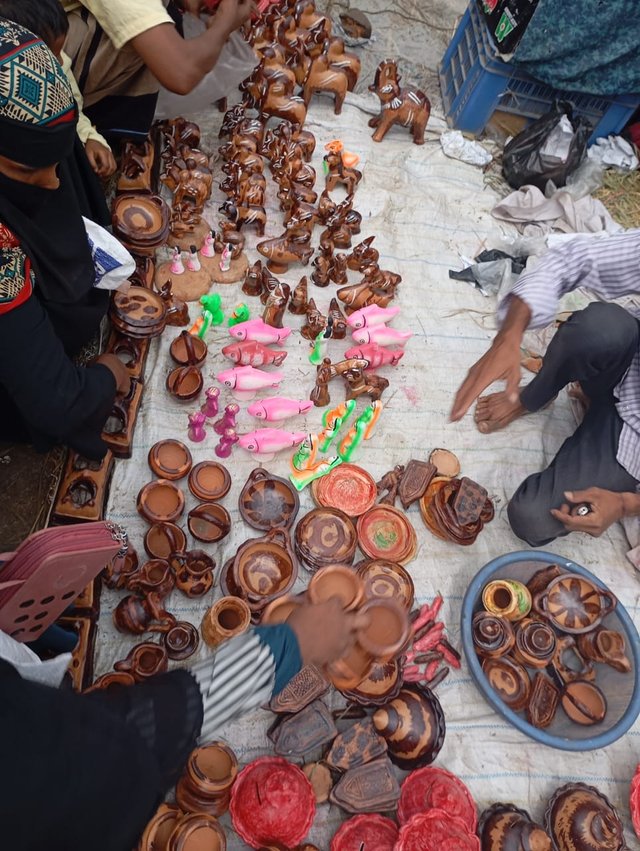Clay Toys: A Precious Part of Memory, Culture, and Tradition.
Hello dear friends,
I hope you all are doing well and spending a beautiful life with your loved ones. I wish you all happiness and peace.
There are certain moments in life that take us back to the golden days of our childhood. Recently, while going through some photographs, I found a few captures from last year’s Pahela Baishakh fair. In one corner of the fair, I noticed colorful clay animals on display – lions, horses, cows, and goats – crafted by local artisans. A crowd of children had gathered around the stall, their eyes full of wonder. Some of them were pulling their parents’ hands, insisting on buying at least one toy before going home.
It instantly reminded me of my own childhood. I still remember how one Pahela Baishakh, our uncle bought two clay cows for me and my brother. As innocent children, we used to feed grass to those cows, thinking they were real. 😁 Of course, we did not realize then that they were only made of clay. Yet, those toys were priceless to us. We proudly kept them in our cupboard, showed them to our friends, and created a whole imaginary world around them.
Clay toys have a long and rich history in the folk culture of Bangladesh. In rural fairs, haats, and especially during Pahela Baishakh, these toys were once a common sight. In the past, almost every household had children playing with clay horses, cows, lions, elephants, or dolls. Beyond being toys, they were also used as decorative items in many homes. Even today, in some houses, you can still find a colorful clay toy displayed in a showcase or cupboard.
But times have changed. With the arrival of the internet, plastic toys, and modern gadgets, the appeal of clay toys has faded. Today’s children are more fascinated by mobile games, robots, or battery-powered toys. As a result, the livelihood of the artisans who create clay toys is under threat. Yet, their work is nothing less than an art form. From collecting clay, shaping it, baking it in fire, to painting and decorating – every step requires skill, patience, and dedication.
The true beauty of clay toys lies in their simplicity and the cultural essence they carry. They are not just playthings; they are symbols of our tradition and heritage. Many child psychologists believe that simple toys like these stimulate creativity and imagination far more than flashy modern toys. Through clay toys, children build a connection with nature and animals, learning to imagine and nurture at an early age.
In today’s world, it is important to revive this fading craft. If the government, cultural organizations, and private initiatives come forward, artisans will be encouraged to continue their work. Schools, cultural festivals, and exhibitions could also feature clay toys to inspire young generations. And if urban parents consciously choose to buy clay toys for their children, it will not only bring joy to the kids but also help sustain an entire community of traditional craftsmen.
To conclude, clay toys are not just lumps of clay; they are memories, emotions, and reflections of our culture. Just as those clay cows once painted my childhood with joy, today’s children too can cherish such toys while unknowingly keeping our folk heritage alive for the future.
Thanks all
| Device | Mobile |
|---|---|
| Model | Realme C- 53 |
| photographer | @joniprins |
| location | Brahmanbaria,Dhaka |








@tipu curate 2
Upvoted 👌 (Mana: 2/7) Get profit votes with @tipU :)